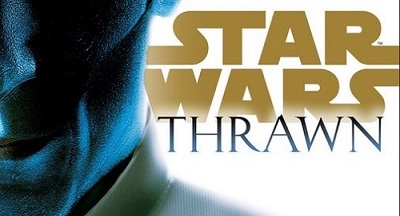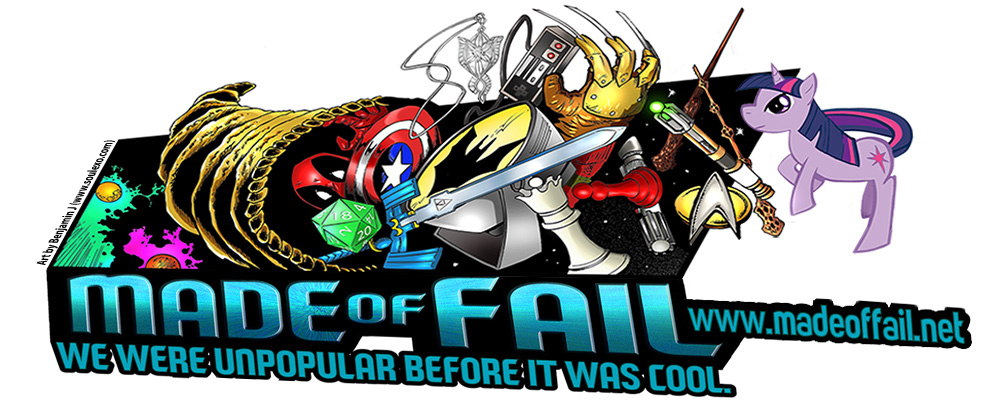written by George Hatch

I’ve been a Star Wars fan for most of my life, but it wasn’t until my late teens that I was really turned on to the novels in the Extended Universe. I spent a good portion of my twenties voraciously reading the next chapters in the post-Return Of the Jedi era, until I felt a sense of closure at the end of the Legacy Of the Force series. Six years later, Disney bought Lucasfilm, ending the Extended Universe and establishing a new one. However, Disney did an interesting thing when it grandfathered the Clone Wars cartoon into their new cartoon, Star Wars: Rebels: they brought back fan-favorite characters, such as Ahsoka Tano. It was a sign that not all the old EU characters were destined for the great space dustbin.
Still, I was legitimately shocked when the news out of SDCC 2016 was that Grand Admiral Thrawn would be the main villain for Season Three of Star Wars: Rebels. I damn near squealed with glee when it was announced Timothy Zahn was returning to write a full-length novel about the rise of the character with whom he is most associated (sorry, Mara Jade fans). So when my copy of Thrawn finally got here, I will admit to feeling some trepidation before starting it. Like I said, I felt a sense of closure with the Star Wars EU almost ten years ago. Would reading this book reignite the old passion, or would it be a bitter disappointment laced with regret?
It does neither, really. It’s a good book, fun to read, but ultimately empty of any emotional resonance. It’s a Sherlock Holmes book set in the Star Wars universe, and I’m not referring to the character Sir Arthur Conan Doyle wrote. I refer to the pop culture version we’ve gotten from Steven Moffat, Guy Ritchie, and Bryan Singer. This era’s Sherlock (and House) is brilliant but distant, callous yet intuitive, a general above generals in terms of strategy and tactics, yet politically ambivalent. He was a fascinating character twenty years ago, but now? Not as much.
The book itself is supposed to be, among other things, a character study of this unique and interesting character who was introduced in the ’90s and had very limited exposure. Unfortunately, Zahn’s decision to concentrate on Thrawn’s life entering the Imperial Navy gives us get no sense of who Thrawn is. We see that he’s a genius-but-amoral tactician who is ten steps ahead of everyone else, but because he’s an alien in a traditionally human service, he’s impeded at every stop by racism and politics. I wanted to see the formation of this character, what made him both a leader and an outcast from his own people. I wanted to see more of Chiss society and the threats which created such a ruthless tactician.
There are some snippets to be gleaned here and there, but they are only tantalizing glimpses into something that may never be seen. I wish this had been a two- or three-part series, because it would have given some breathing room not just to Thrawn’s story, but to those of our two other main characters.
Speaking of, a Sherlock Holmes book needs a John Watson. Thrawn’s Watson in this novel is played by Eli Vanto. He’s the point of entry character, a young man from the Outer Rim whose greatest ambition is as an Imperial supply chief on a backwater world far from the classism at the Empire’s core. Initially, he was only assigned to be Thrawn’s aide because he spoke the language Thrawn was familiar with, but his destiny ends up being tied to Thrawn’s, for both good and ill. Eli doesn’t get much more character development than Thrawn because he needs to continue to be amazed at Thrawn’s tactical cunning. Still, what’s there is consistent and makes sense. It also makes his final act all the more disappointing, but I’ll come to that soon.
The final protagonist is Arihnda Pryce, who is the most well-developed character in the book. It was only during the writing of this review that I learned she was a character in Rebels, so her inclusion in the story makes a hell of a lot more sense. Her journey from administrator of her parents’ mine on Lothal to the planet’s Governor is a testament to how she never stopped believing and, more importantly, an example of how to lose one’s soul in a quest for vengeance. As evil as Arihnda ultimately becomes, it’s hard not to see her as a tragic figure as she is betrayed by almost everyone around her.
It’s also in Arihnda’s story that Thrawn‘s biggest problem becomes clear: this is a story where the villains are our narrators. We have brief flashes of just how corrupt and evil the Empire is, but because the characters have been indoctrinated into the Empire’s teachings, it barely fazes them. There’s no shock or outrage once the climax happens because it’s become so routine for them. While that can make for wonderful subtext, this is a day and age where villainous subtext is very easily lost.
Arihnda Pryce’s corruption is easy to see and follow. I don’t know if Thrawn even had an ounce of morality to corrupt. But Eli Vanto is the most troubling example of corruption, because he doesn’t seem to recognize it in himself. He’s aware of the evils around him, but does nothing about them. He may not commit any heinous acts himself, but he also has no remorse about them. He is a collaborator, and he is rewarded for it. But as they are our narrators, it’s easy to forget that they are part of a great evil.
Maybe I’m being too harsh. It’s just a Star Wars book, after all. I mean, it’s not like the Empire was an obvious Nazi allegory or anything. So, if you’re in the mood for Sherlock Holmes in space, with a little political gamesmanship on the side, I can recommend it. It’s a good read and it definitely makes you think about a few things. Just try not to forget what you’re reading about.
Star Wars: Thrawn can be purchased online at Amazon.com. George can be found on Twitter at @Raeseti.
